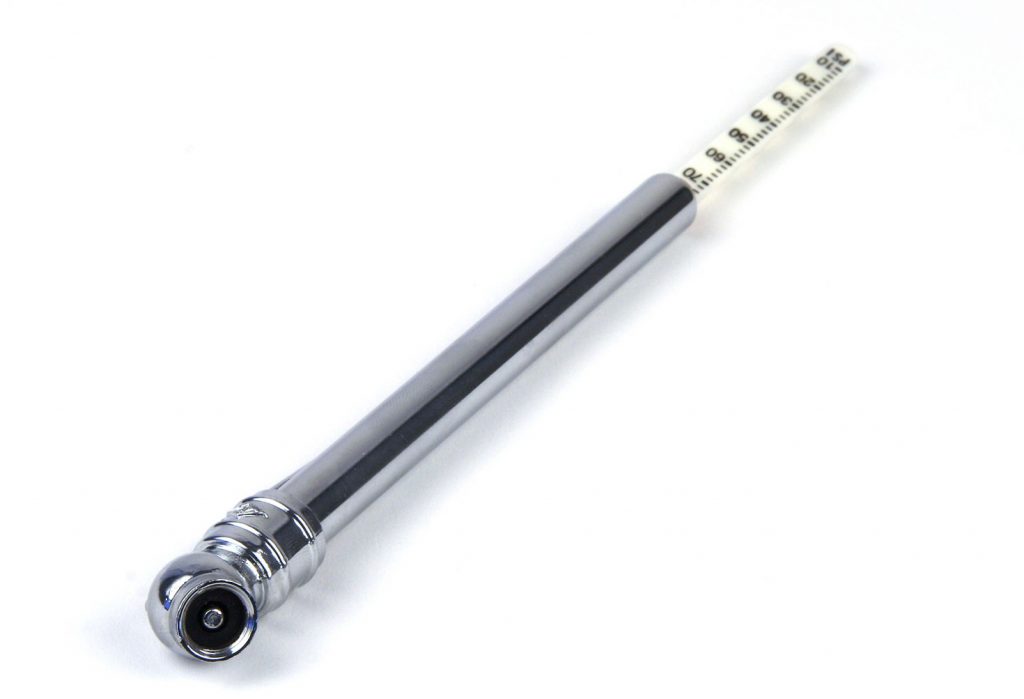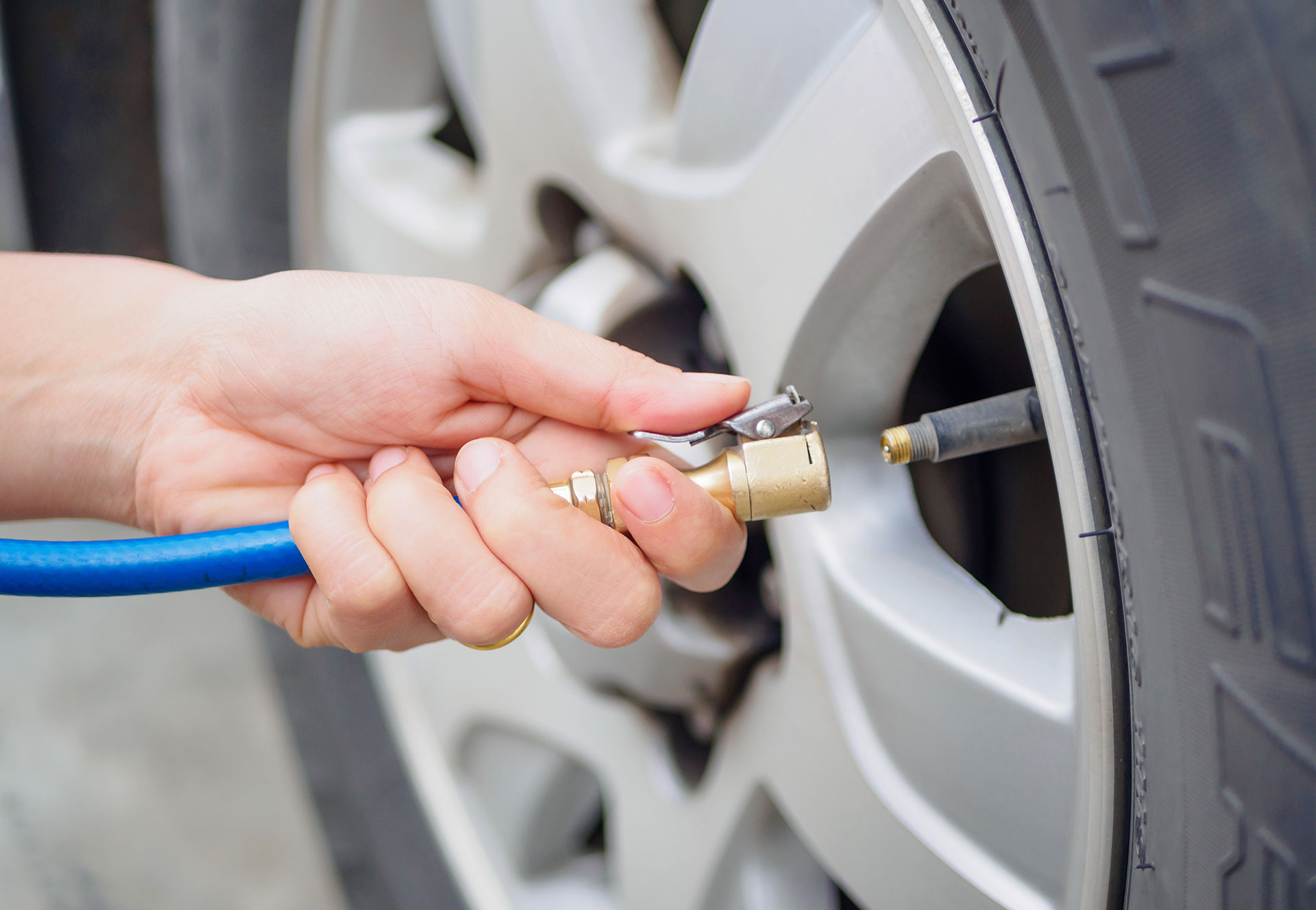Benefits of Proper Tire Inflation
Suppose that you are driving along in the car or truck that you normally use but notice that it is not running as well as it should. The vehicle takes longer to accelerate or stop than it usually does, and it seems somewhat unstable when you turn corners or change lanes. The problem could be in the steering or braking systems and require major repairs, or it could be something as simple as tires losing air. Keeping a vehicle’s tires inflated to their proper level is important for safety and for ensuring that a vehicle runs properly.
Improper tire inflation is a common problem, partly because it is difficult to detect just through observation. A completely flat tire, for example, is obvious because of the way the rubber lies on the ground. Between a complete flat and a fully inflated tire, however, it can be difficult to tell the difference. Overinflation of a tire is also very difficult to see. According to Transport Canada, a study of Canadian drivers found that about half of the vehicles on the road had at least one tire that was either underinflated or overinflated, some by 20 percent.

Both underinflation and overinflation can be problems for safe operation of a vehicle on the road. According to Car and Driver, underinflated tires generate more heat than usual, which can cause structural damage to the wheel. This can be dangerous, as the damage can badly affect the wheel’s performance and throw the vehicle off balance. Underinflation can also affect gas mileage, and drivers may find themselves spending extra money on fuel with underinflated tires.
Tire Pressure and Driving Stresses
Tires are designed to reduce stresses in the vehicle and its occupants. In an underinflated tire, the shock absorption capacities are reduced from what they should be, making potholes and other road hazards more dangerous. The parts of the tire that contact the road will also wear out more quickly than otherwise as it is not designed for the amount of friction that comes with the process. With insufficient air inside, the tire’s shape changes, also potentially reducing its grip on the road.
The same problems can occur with an overinflated tire. Grip and shock absorption can be reduced, potentially affecting the vehicle’s suspension and increasing wear on the centre of the tire’s tread. Tires are designed for a certain amount of contact with the road, giving it the best level of control over hazards while helping the wheels to move smoothly and with as few hindrances as possible.
Tire Shape When the shape of the tire changes, it also affects how well the vehicle works on the road, potentially causing the driver to lose control or to have more trouble with managing maneuvers such as turning,
stopping, and starting. Especially for beginning drivers or in difficult weather conditions, this can potentially cause accidents.

Keeping tires properly inflated is essential for everyone on the road. Experts recommend that vehicle owners check the air pressure of the tires about once a month to make sure that they have the correct amount of air. Normally, the correct pressure is given in psi, or pounds per square inch. The Transport Canada website recommends looking for the label giving that information on the edge of the door on the driver’s side, on the door post, inside the glove compartment or on the fuel door. Even if it is missing from those spots, it should be available in the owner’s manual.
How a Vehicle is Used
Sometimes, the ideal tire pressure can vary, depending on how the vehicle is used. Race cars, for example, put much more stress on the tires than an ordinary vehicle would. Similarly, a driver going on a long trip across the country would need to be more careful about tire pressure than someone who drives short distances in the city before returning home. Still, tire pressure is essential for ensuring that vehicles work at their highest capacity and level of fuel efficiency. Since a visual check is normally insufficient to be sure that a tire is properly inflated, people need to use a tool to check for the amount of air in the tire.
One way to check for tire pressure is to go to a service station or tire shop and use the tools there or to have a staff member make the check instead. For people who are unsure of their ability to use tools, this might be the best option. If the pressure in a tire is low, air refill devices are available at these locations, and help is available in case of problems.
Handheld Tire Gauges
Sometimes, going to a service station or tire shop is inconvenient or time-consuming, or people simply prefer to check the tire pressure for themselves. At home or on the road, inexpensive handheld tire pressure gauges can be effective ways of ensuring that the tires are fully functional. Many of these gauges look a bit like a dental instrument but are designed to show the amount of air left in a tire.
Tire gauges are available at any store that sells auto parts. Once the vehicle owner has learned a few simple steps, the gauges are generally quite easy to use. They involve unscrewing the tire’s valve cap, inserting the gauge onto the valve and then reading the results from the side of the gauge. If the numbers match the recommended tire pressure, the vehicle owner need not take any further action, but if a tire’s pressure is too low, it may be necessary to add more air.
The Wheels.ca website recommends using a digital tire gauge if possible to get a more accurate reading than other gauges can give. It is also best to check the air pressure when the vehicle has sat unused for at least a few hours and the tires are cold, as the friction from driving causes the air inside the tires to heat up and expand. This could give a false reading and make it seem that the tires are full when they might actually have lost air. If necessary, vehicle owners can drive to the nearest service station to check the air pressure, but only if they have to go no more than a few kilometres.
When checking the tire pressure, it is important for vehicle owners to check all four tires, since one tire may be losing air at a faster rate than the others due to a small tear or puncture. All tires lose some air pressure over time, since the wheels have small imperfections which allow air to escape slowly. Even with no particular gash or hole, a tire’s air pressure can decrease substantially over time. The change may be difficult to notice until the air pressure falls to a dangerous level, and it is important not to allow that to happen.
Precautions
A precaution that vehicle owners should take is to pay attention to the types of roads they are using, as well as wear and tear on the tires. Gravel roads can often be hard on tires, and areas with sharp stones or debris on the road can cause punctures or gashes. Transporting heavy loads can also cause tires to lose more air than usual. After a trip involving any of these conditions, it is a good idea to check the pressure in the tires and add air if necessary.
An equally important task, but one that vehicle owners might tend to forget, is to check the pressure on the spare tire. Many people can drive for years without ever needing to use the spare tire, and it can be easy to forget to check it. However, a spare tire that has gone flat is useless as a substitute for any other tire. It is a good habit to check the air in the spare tire at the same time as the other tires to be sure that it is still functional.
Warning Lights for Tire Pressure
In many vehicles, especially ones manufactured from 2008 or later, drivers have extra help in deciding when the tires on their vehicles need air. Since that year, all vehicles have come with systems that monitor tire pressure and relay the information to the instrument panel. This system can help to give people a sense of security, but it is not perfect. One problem is that the warning light comes on only when the tire has lost 25 percent of its air, which can already be very dangerous. Doing a manual check on a regular basis can give drivers a much better idea of the inflation of their vehicles’ tires.
Improper tire inflation can cause many problems, from increased fuel consumption to a loss of control of the vehicle to more wear and tear on the tires and possibly damage to the wheels. Checking the level of tire inflation regularly is important, whether drivers do this themselves or get a mechanic to check for them. To get the best out of a vehicle and to enhance safety on the road, making sure that the tires are properly inflated is one of the easiest aspects of operating a vehicle in Canada.
